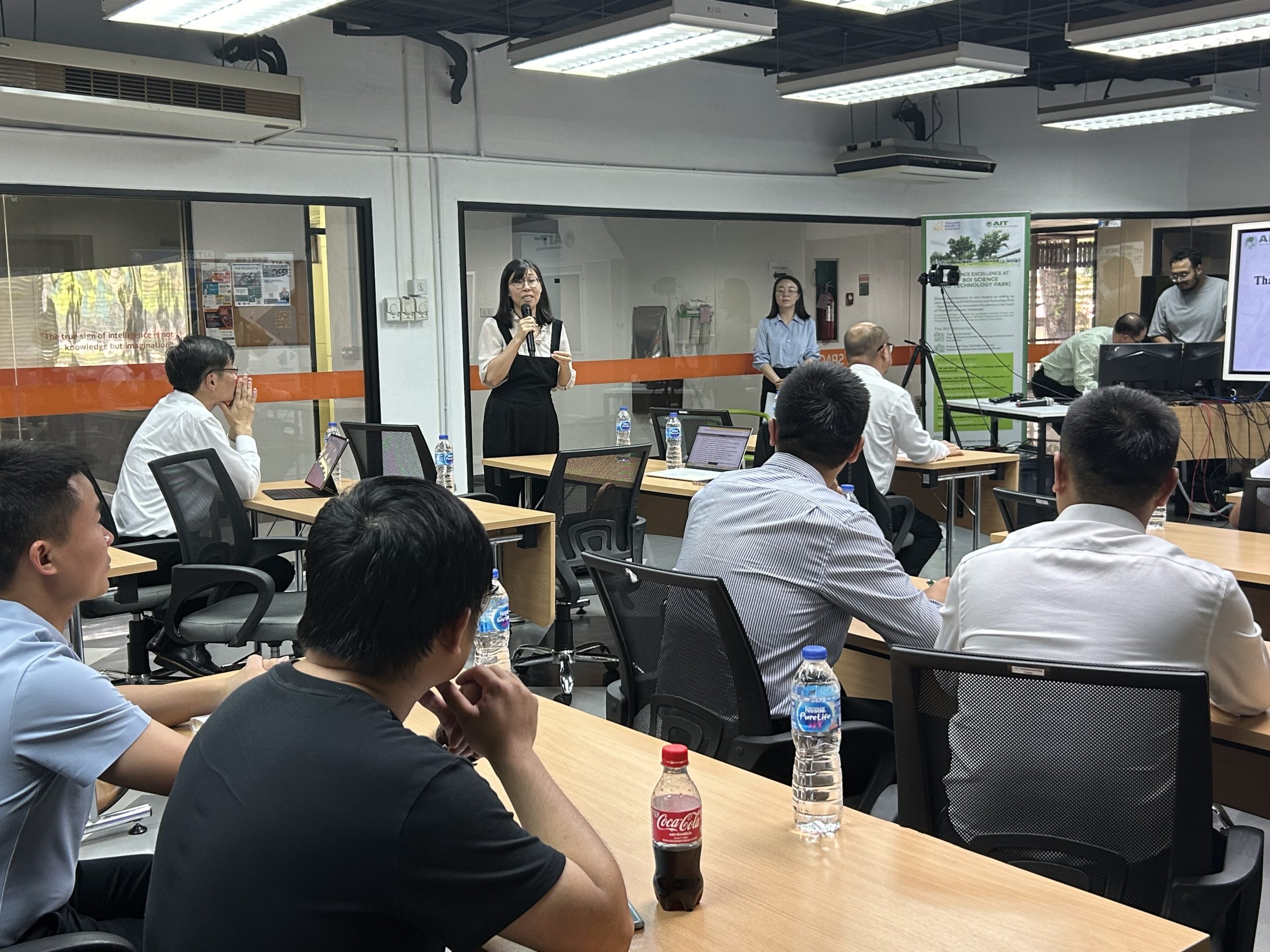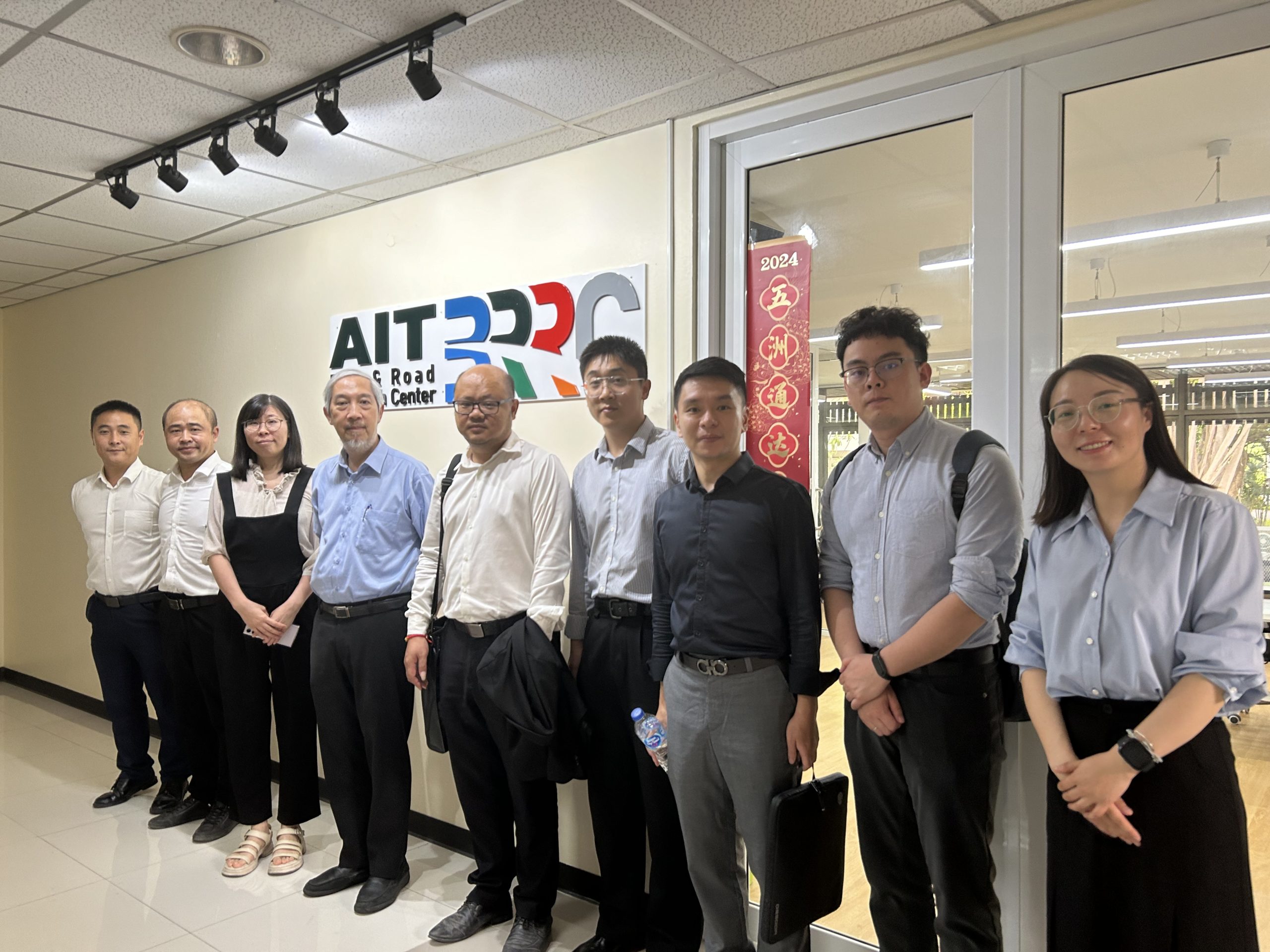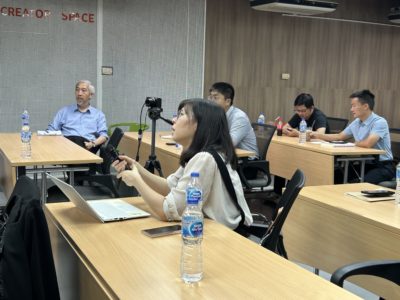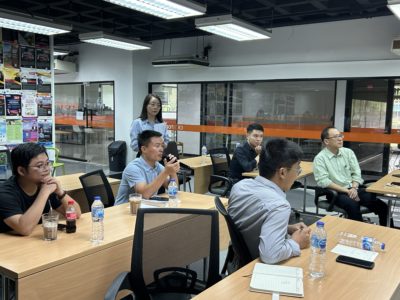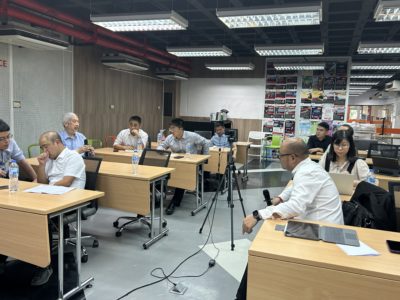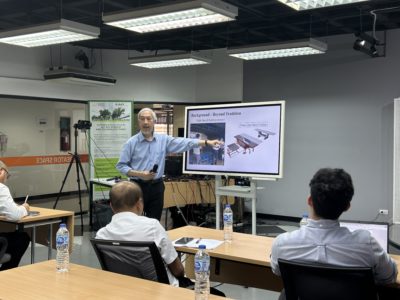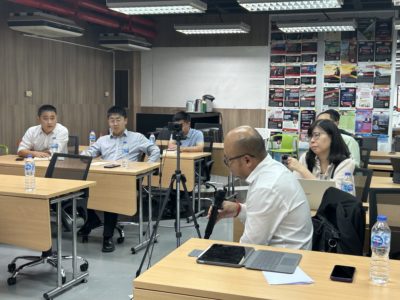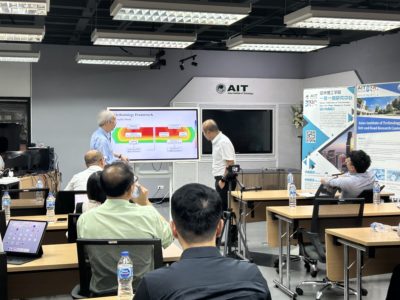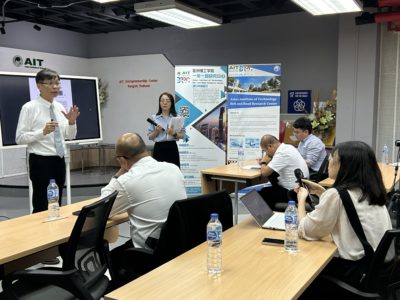On 16 May 2024, the progress meeting of China-Thailand Highspeed Rail collaboration Project between China State Construction Engineering Team (CSCECTH) and AIT Belt & Road Research Center (AIT BRRC), hosted by Dr. Wenchao Xue, Director of AIT BRRC. 7 representatives of CSCECTH, led by Mr. ZHOU Jiayi, Project Manager of HSR Development for Regional Connectivity, China State Construction Engineering (Thailand) Co. Ltd. participated this meeting. Also, representatives from School of Engineering and Technology (SET) of Asian Institute of Technology, led by Prof. Pennung Warnitchai, Professor of Structural Engineering (SE), Dr. Kuo-Chieh Chao, Associate Professor of Geotechnical & Earth Resources Engineering (GTE), Dr. Djoen San Santoso, Associate Professor, Construction, Engineering, and Infrastructure Management (CEIM), School of Engineering and Technology (SET), were in the meeting. This meeting was with the purpose to exchange of ideas, update of collaborating progress, conclude collaboration achievement in the past year, and plan for the work in the coming year from both sides.

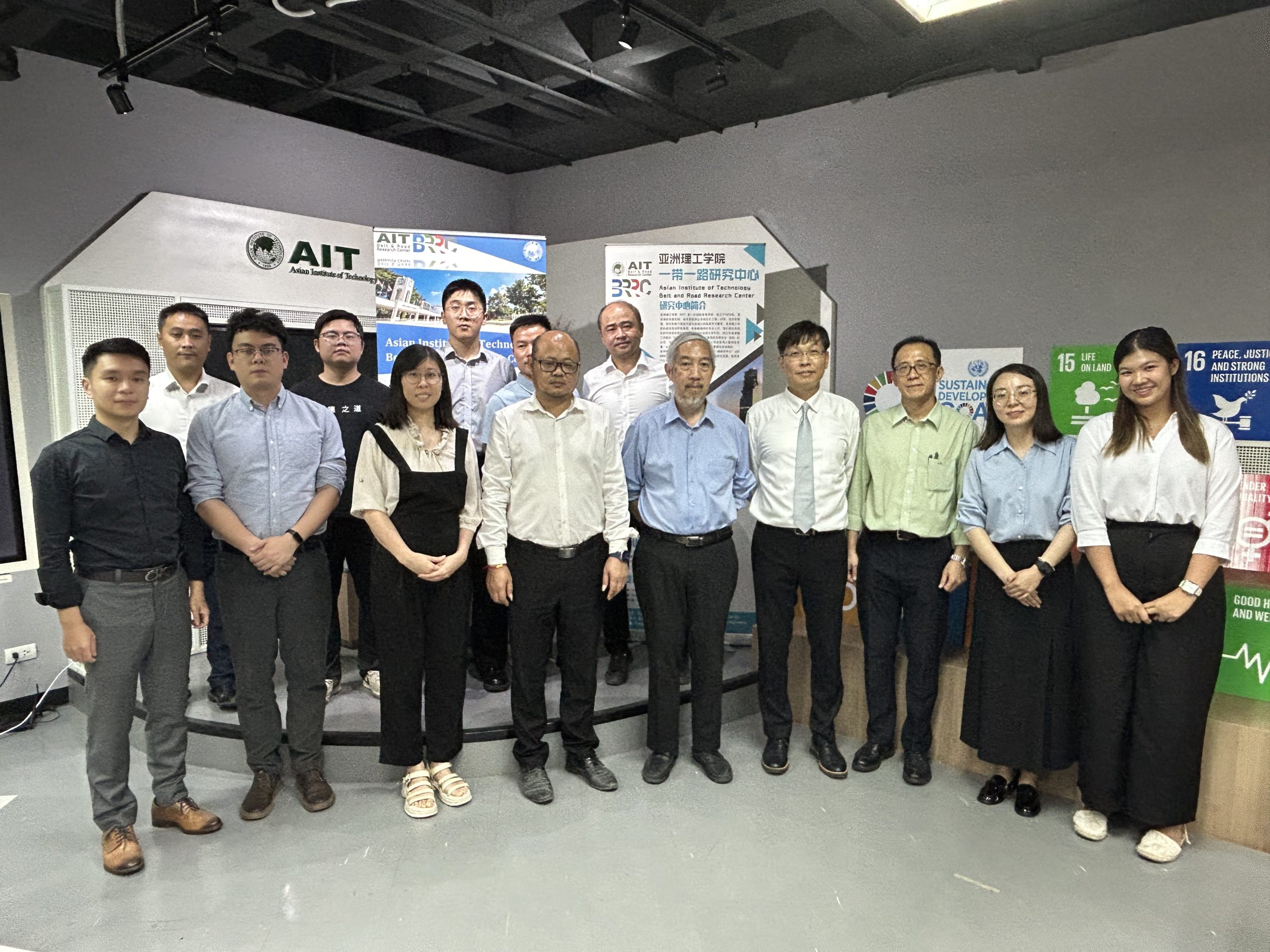
During the meeting, research progresses have been presented by three research teams from AIT. Followed by in-depth discussions on current researches, possible research collaboration in future phase of the Thailand- China High Speed Rail project, and other civil infrastructure projects by CSCEC in Thailand.
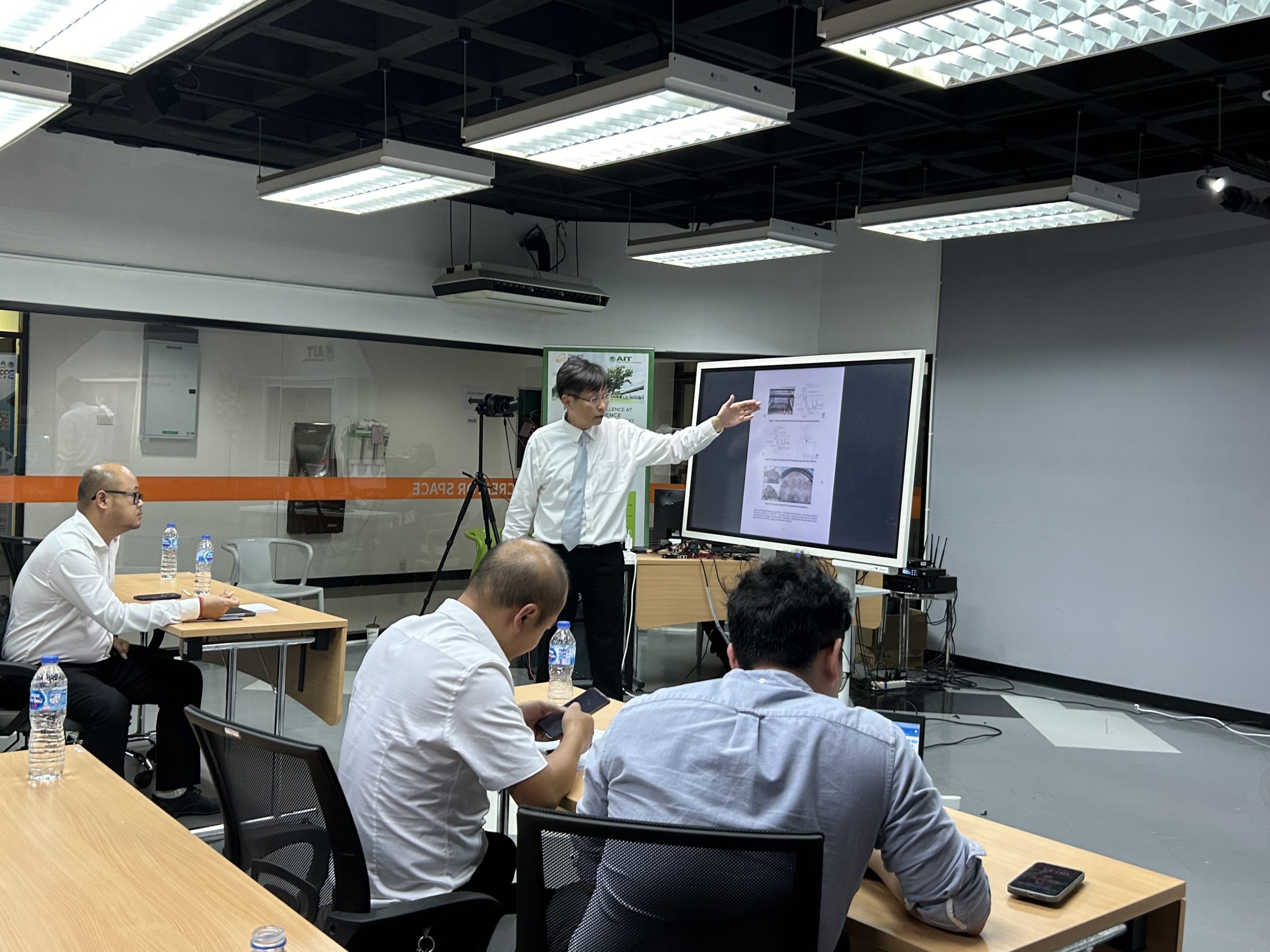
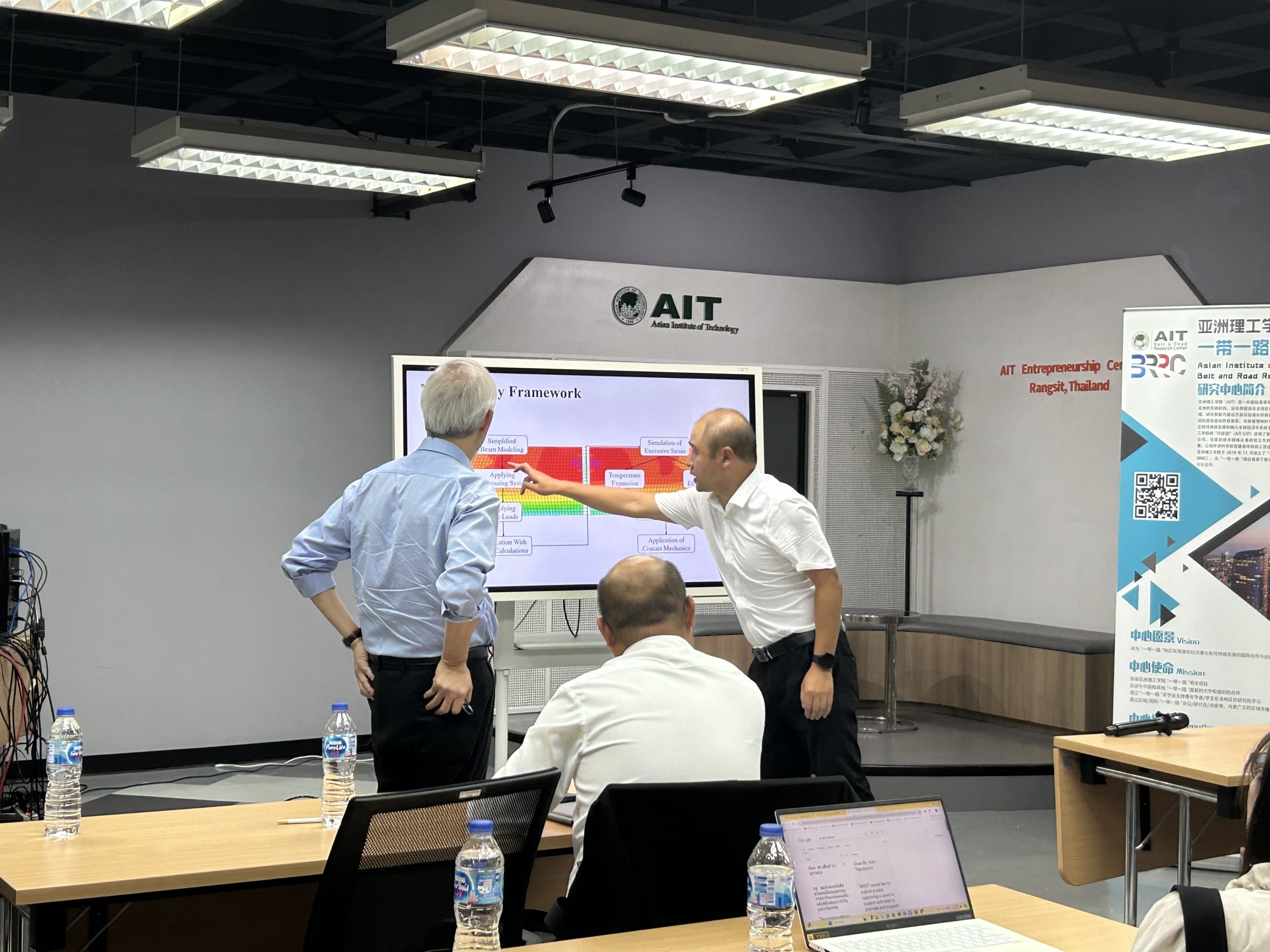
Mr. Zhou Jiayi, provided an update on the whole high speed rail project in Thailand, stressed the efforts made for the productivity and smooth progress of the current projects. He also emphasized the importance of the continuous support and cooperation with AIT and expressed interest in continuing cooperation with AIT for future projects.

Dr. Wenchao, Director of BRRC, expressed gratitude for the engaging scientific discussions and fruitful collaboration between academic researchers and practical engineers in the Thai China high-speed Railway project. She highlighted the success of the first phase of collaboration and expressed excitement for future collaborations, potentially extending into the project’s operating phases. As the coordinator, BRRC pledged to facilitate communication between research teams and collaborators and offered support for joint activities. Additionally, Dr. Wenchao also mentioned the possibility of involving more collaborators, such as Tsinghua University, in future collaborations. She thanked all colleagues for their contributions and expressed hope for long-term collaboration in the future.
